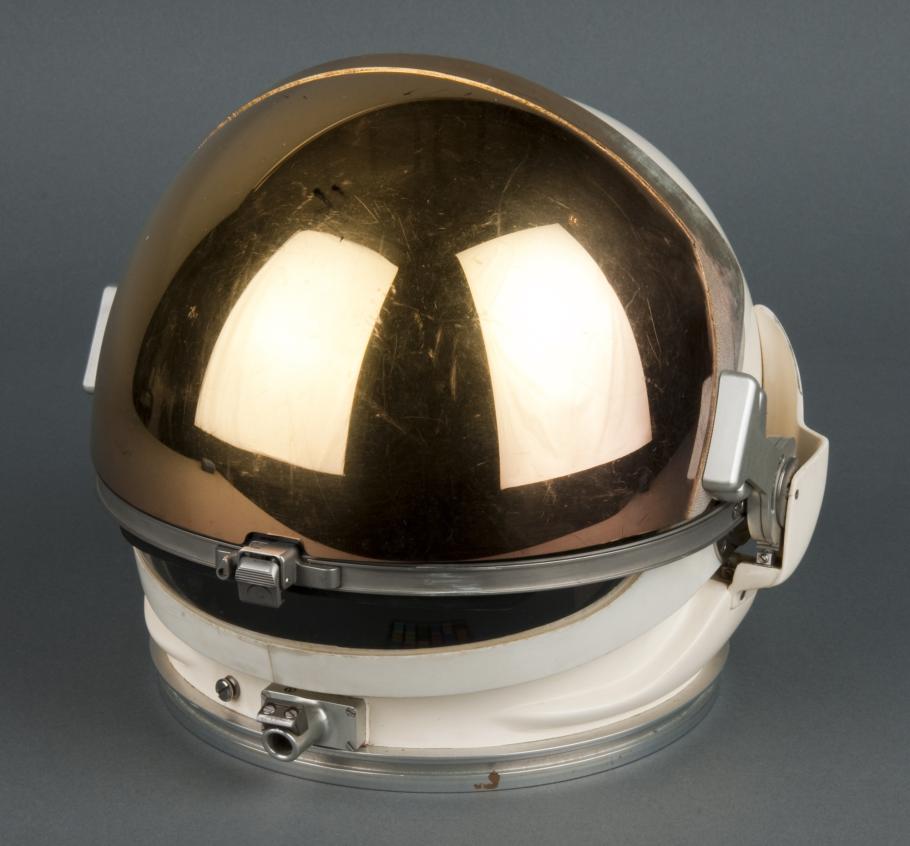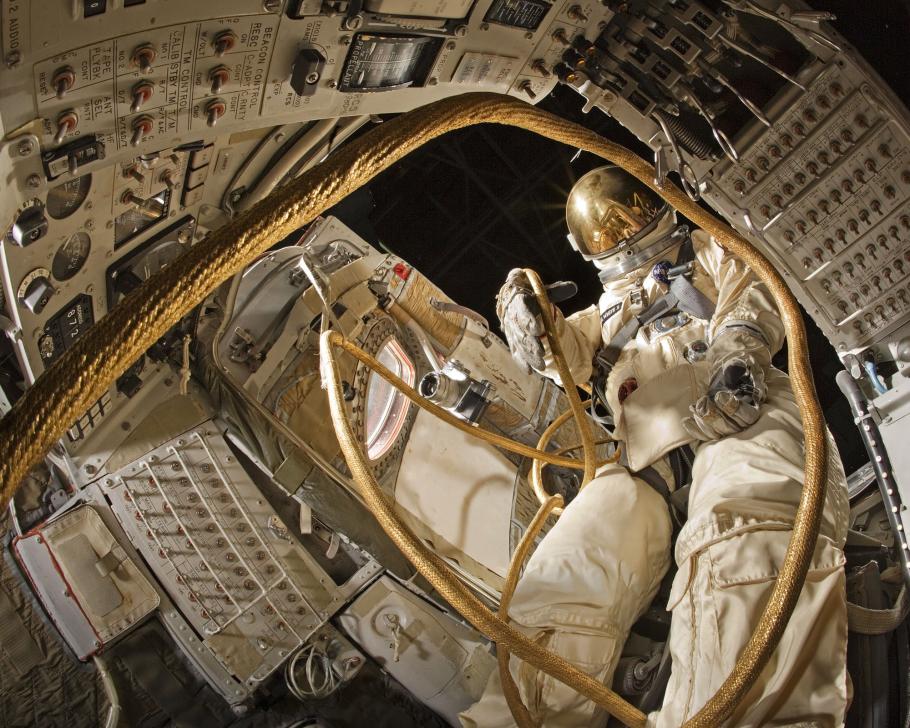This helmet was worn by astronaut Ed White, Pilot of the Gemini 4 mission in June 1965. This was the first manned Gemini mission in which an astronaut "walked in space".
The helmet was constructed of fiberglass and epoxy resin and was molded to fit directly into the neck bearing. A plexiglas visor, capable of being raised for access, was attached with pivots, and when lowered into pressure sealing position, it locked in place with a latch. The additional visor of plexiglas coated with gold, was designed to filter out the extreme light of the sun's rays. Communication devices with suede-covered ear pads were incorporated into the helmet.
NASA transferred the helmet to the Museum in 1967.
Display Status
This object is on display in Destination Moon at the National Air and Space Museum in Washington, DC.

Object Details
Country of Origin
United States of America
Type
PERSONAL EQUIPMENT-Helmets & Headwear
Manufacturer
David Clark Company, Inc.
Astronaut
Edward H. White, II
Dimensions
3-D: 24.1 × 20.3 × 27.3cm (9 1/2 × 8 × 10 3/4 in.)
Materials
Shell: High impact fiberglass/epoxy-resin, plastic, rubber
Visor: Polycarbonate
Fittings: Aluminum, steel, polyester, nylon, Velcro
Inventory Number
A19670210001
Credit Line
Transferred from NASA - Manned Spacecraft Center
Data Source
National Air and Space Museum
Restrictions & Rights
Usage conditions apply
For more information, visit the Smithsonians Terms of Use.



